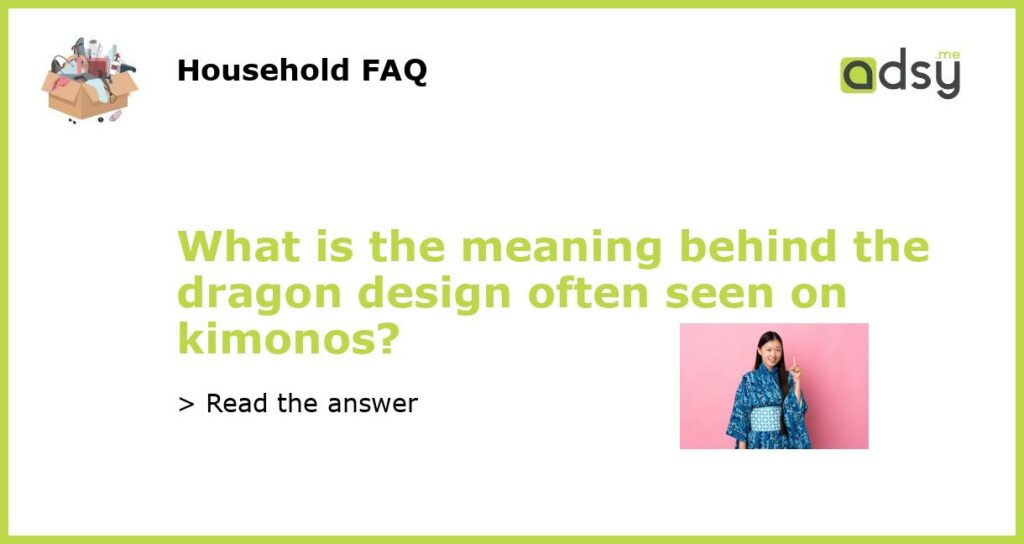The Dragon on Kimonos: A Symbol of Power and Good Luck
Kimonos are traditional Japanese garments that are known for their intricate designs and patterns. One of the most popular designs seen on kimonos is the dragon. But what is the meaning behind this mythical creature on these iconic garments? Let’s take a closer look at the symbolism of the dragon on kimonos.
Dragons in Japanese Culture
In Japanese culture, the dragon is a revered creature that is often associated with power, strength, and good luck. Unlike in Western cultures where dragons are typically depicted as evil creatures to be feared and slain, dragons in Japanese tales are usually benevolent and admired for their might.
The Dragon on Kimonos
The dragon design on kimonos is often depicted in vibrant colors and intricate patterns, and is usually found on the back of the garment. This placement is intentional, as it symbolizes the idea of the dragon “watching over” the wearer and offering protection and good fortune.
The Different Types of Dragon Designs
There are several different types of dragon designs that can be seen on kimonos. One popular design is the Ryu or Tatsu dragon, which has three claws and is often found on formal kimonos. Another popular design is the Sui-Riu dragon, which is associated with rain and water and is often depicted with blue or green scales.
Celebrities Sporting Dragon-Printed Kimonos
The beauty and power of the dragon design on kimonos has made them a popular choice for celebrities. In recent years, stars like Rihanna, Taylor Swift, and Katy Perry have been spotted wearing dragon-printed kimonos on the red carpet, proving that this iconic design is not just limited to traditional Japanese culture.






